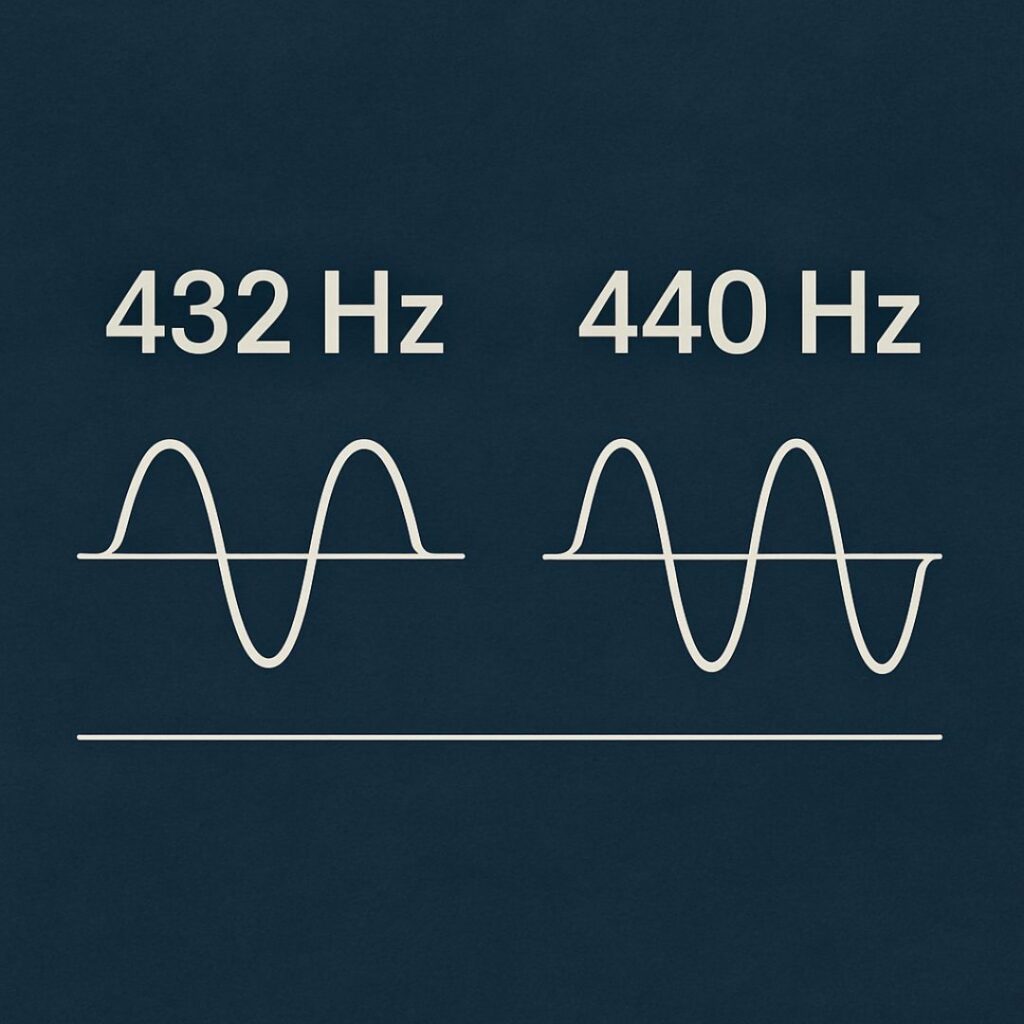The Difference Between 432 Hz and 440 Hz: The Musical and Spiritual Debate, musicians, healers, and listeners have debated the impact of musical tuning. At the heart of this conversation lies the question: Should music be tuned to 440 Hz, the modern standard, or 432 Hz, the so-called “healing frequency”?
This debate is not just about numbers—it’s about how sound affects our emotions, bodies, and even our spiritual awareness. Let’s dive into the musical and spiritual differences between 432 Hz and 440 Hz, and why artists like Emuna Music embrace 432 Hz tuning for healing and meditation.
What Is 440 Hz Tuning?
In 1939, the International Organization for Standardization (ISO) adopted 440 Hz as the reference pitch for the musical note “A.” This standard has since been used worldwide for orchestras, instruments, and commercial music.
✨ Characteristics of 440 Hz tuning:
-
Sharp, bright, and precise tone.
-
Widely used in Western classical and popular music.
-
Considered the “industry standard” for tuning instruments.
Criticism of 440 Hz:
Some argue that 440 Hz creates tension or disharmony in the body, making it less natural compared to other tunings. Critics believe that it keeps listeners in a state of mental stress rather than balance.
What Is 432 Hz Tuning?
The 432 Hz frequency is often referred to as the “natural” or “healing” frequency. Unlike 440 Hz, 432 Hz is mathematically connected to patterns found in nature, sacred geometry, and even cosmic resonance.
✨ Characteristics of 432 Hz tuning:
-
Softer, warmer, and more harmonious sound.
-
Said to resonate with the natural vibration of the Earth (the Schumann Resonance).
-
Commonly used in meditation, yoga, and healing practices.
Benefits associated with 432 Hz:
-
Promotes relaxation and reduces stress.
-
Encourages emotional release and inner peace.
-
Creates a more immersive and spiritual listening experience.
-
Aligns with the body’s natural energy fields.
Scientific vs. Spiritual Perspectives
-
Scientific View: While research on 432 Hz is limited, some studies suggest that lower tunings can create a calming effect, slowing heart rate and reducing anxiety.
-
Spiritual View: Many traditions and sound healers believe 432 Hz connects us with universal harmony, unlocking higher states of consciousness.
This is why 432 Hz is often called the “frequency of the universe.”
432 Hz vs. 440 Hz: The Key Differences
| Aspect | 432 Hz (Healing Frequency) | 440 Hz (Standard Tuning) |
|---|---|---|
| Sound Quality | Warm, natural, flowing | Bright, sharp, energetic |
| Emotional Impact | Calming, peaceful, heart-centered | Stimulating, tension-oriented |
| Use in Music | Meditation, healing, relaxation, ambient genres | Classical, pop, commercial music |
| Spiritual Connection | Said to align with Earth’s frequency and cosmos | Considered disconnected from natural flow |
Emuna Music and the 432 Hz Choice
As an artist dedicated to healing through sound, Emuna Music composes and produces all tracks in 432 Hz tuning. Albums such as Deep Calm II, Healing Meditation, and Spiritual Ascension 432 Hz are created to guide listeners into states of serenity, emotional release, and spiritual connection.
By choosing 432 Hz, Emuna Music aligns its work with a global movement of musicians and healers who see sound as more than entertainment—it’s a tool for transformation and inner harmony.
Final Thoughts
The debate between 432 Hz and 440 Hz is both musical and spiritual. While 440 Hz remains the standard in the music industry, 432 Hz continues to attract listeners seeking a deeper, more healing connection with sound.
Ultimately, the best way to understand the difference is to listen for yourself. Try comparing the same piece of music in both tunings and notice how your body and emotions respond.
🎧 Experience the healing power of 432 Hz with Emuna Music on Spotify, Apple Music, and YouTube. Let the natural harmony of sound guide you toward inner peace and balance.







